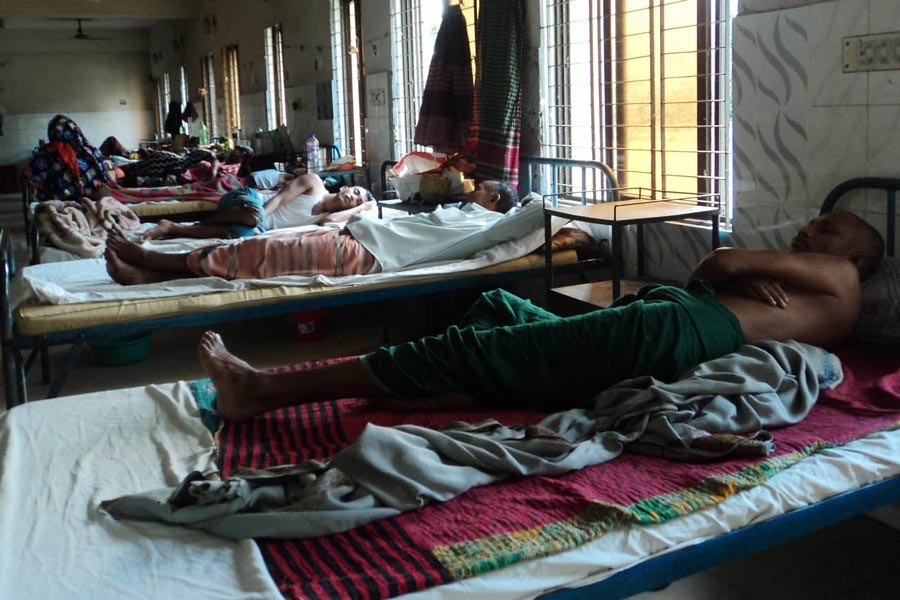
Published :
Updated :

It is nothing surprising that patients from different parts of the country are crowding the large government and private health facilities in Dhaka for better treatment. Patients belonging to poor and low-income families make their bid to get admitted to public hospitals and the middleclass and affluent sections to private ones. The first group, naturally, has to battle hard to secure beds since the public hospitals do not have enough of the same. Naturally, things are smooth and easy for the patients seeking treatment from posh and moderately expensive private health facilities.
Given the expansion of health facilities, both in private and public sectors, across the country in recent years, patients are not supposed to crowd Dhaka hospitals. Yet the rush is on. The number of hospitals and clinics in places outside Dhaka has gone up, steadily, but the same has not happened in the case of specialist doctors and modern treatment facilities. There are as many as 42 government and 61 private medical colleges and a good number of them is located in outlying districts. The hospitals of some public medical colleges do have serious dearth of specialists and modern treatment facilities while many private medical colleges even do not have their own hospitals.
The deplorable state of health facilities in districts was revealed in a report placed before a High Court bench late last week. It said only two district hospitals have intensive care units (ICUs) and five of them are equipped with coronary care units (CCUs). The number of beds in these units is also awfully inadequate. If this remains the situation with district hospitals, one can well guess the state of the Upazila (UZ) Health Complexes. That doctors skipping their duties in these complexes is an old story. Also there have media reports been galore about out of order ambulances, x-ray machines and other medical equipment of these grassroots health facilities.
Both patients and doctors manning the UZ health complexes are finding themselves in a helpless situation during the ongoing dengue outbreak. Many such health facilities may not be capable of treating patients with depleting platelet count which they have no device to determine, an essential tool for diagnosis and patient management. Overall, the health facilities at the grassroots are deficient in manpower, logistics and medical equipment. In the event of any emergency health situation, doctors and nurses of these facilities would have little to do.
The health sector honchos, who are more prone to making tall claims, should make a down-to-earth assessment of the strength of district as well as UZ health facilities and take steps to improve the situation. There is no denying that in the absence of proper monitoring and control, pilferage, wastage of resources and other forms of corruption are rampant in government health facilities.
The annual budgetary allocation for the health sector in Bangladesh is said to be one of the lowest in the region. Nothing can be more painful if a notable part of such inadequate allocation is pilfered or wasted. The government must stop such a trend and take concrete steps to improve facilities at district and upazila level health complexes so that poor patients are not required to come to Dhaka for better treatment.


 For all latest news, follow The Financial Express Google News channel.
For all latest news, follow The Financial Express Google News channel.